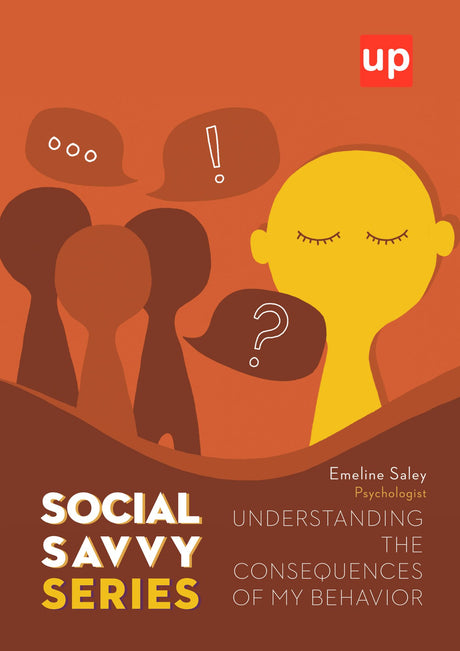Effective Positive Behavior Support Autism Strategies: A Guide for Parents and Educators
Do you struggle with managing challenging behaviors in individuals with autism? Positive Behavior Support (PBS), particularly positive behavior support autism, offers effective strategies to understand and address these behaviors. In this article, you’ll learn how to create supportive environments and implement personalized interventions that promote positive change and improve quality of life for autistic individuals.
Key Takeaways
- Positive Behavior Support (PBS) is a tailored strategy that aims to minimize challenging behaviors in autistic children by focusing on understanding the antecedents and consequences of those behaviors.
- Key components of PBS include the ABC model (Antecedents, Behaviors, Consequences), person-centered planning, and the development of individualized support strategies that cater to the unique needs of each child.
- Effective implementation of PBS requires the involvement of a collaborative team, regular monitoring of progress, and the establishment of supportive routines, skill-building activities, and visual aids to promote positive behaviors.
Understanding Positive Behavior Support

Positive Behavior Support (PBS) is a personalized strategy aimed at guiding children towards appropriate behaviors by minimizing triggers of challenging behavior and disruptive behavior. Developed in the late 1980s to early 1990s, positive behaviour support pbs emerged from the need for effective interventions for managing challenging behavior, as there were few proven strategies available before. PBS aligns with the principles of applied behavior analysis and person-centered planning by examining the antecedents and consequences of behaviors.
Implementing PBS strategies not only helps manage challenging behaviors but also enhances the overall quality of life for autistic children and their families. Focusing on supportive environments and tailored interventions, PBS empowers children to develop positive behaviors that enhance their well-being and social inclusion.
Key Components of Positive Behavior Support

The foundation of Positive Behavior Support lies in understanding the ABC model, which categorizes behavior into three elements: antecedents, behaviors, and consequences. This model helps in analyzing challenging behavior and developing interventions. Person-centered planning is another crucial component, emphasizing individualized support tailored to the unique needs and circumstances of the individual.
A supportive environment aids in the proactive management of challenging behaviors. PBS strategies are adaptable for different environments, including home, school, and community. A comprehensive positive behavior support plan requires a thorough understanding of the child’s individual needs, behavior patterns, and environmental contexts.
Developing a Positive Behavior Support Plan
Creating a Positive Behavior Support Plan involves multiple steps, such as determining the function of behavior and designing the support plan. The plan outlines supports and strategies for reducing problem behavior and teaching positive skills. The positive behavior support process is highly individualized, catering to the unique needs of each child, and is often enhanced by positive behaviour support services.
A comprehensive plan starts with information gathering, followed by a functional behavior assessment, and finally, hypothesis development. These steps ensure that the support plan is tailored to the child’s specific needs and circumstances, providing a solid foundation for effective intervention.
Information Gathering
Collecting data on specific behaviors is crucial for understanding the underlying issues and designing effective positive behavior support plans. Data collection methods include direct observation, recording incidents, and keeping logs of behaviors over time. This information helps in identifying triggers and understanding the context in which behaviors occur.
Understanding the consequences of behaviors is equally important, as it helps determine the function of the behavior and informs future interventions. This stage sets the foundation for developing strategies that are based on accurate and comprehensive information where behavior occurs.
Functional Behavior Assessment
A Functional Behavior Assessment (FBA) is critical for identifying the reasons behind challenging behavior in order to formulate effective interventions. This functional behaviour assessment involves observing and recording behaviors to uncover their underlying causes. By pinpointing the reasons behind a child’s challenging behaviors, the FBA provides valuable insights that guide the intervention process.
Conducting an FBA helps teams understand the causes and effects of triggers for challenging behaviors. It is essential for creating a positive behavior support plan that addresses the root causes of specific behaviors.
Hypothesis Development
The hypothesis development stage is essential for creating a clear understanding of the factors influencing behavior, guiding the formation of the support plan. This stage involves formulating predictions about behavior based on collected data and observed patterns.
Hypothesis development, which centers on the motivations behind behaviors, helps identify effective intervention strategies. This step ensures that the support plan is based on a thorough understanding of the child’s behavior and its underlying causes.
Implementing Positive Behavior Support Strategies

Implementing Positive Behavior Support strategies involves building a collaborative team that includes parents and caregivers. The PBS methodology emphasizes the involvement of these key stakeholders in the development and implementation of behavior support plans. The goal is to help children develop new positive behaviour that can replace challenging actions, enhancing their communication and social skills.
Practical strategies include establishing routines, teaching new skills, and using visual aids to develop strategies. These approaches are designed to support children in navigating their daily lives more effectively, promoting positive behaviors, and reducing problematic behaviors.
Establishing Routines
Establishing routines is crucial for children with autism as it reduces anxiety and promotes positive behavior. Clear and predictable routines help children understand what to expect, making it easier for them to navigate their day.
In the classroom, predictable routines are essential for supporting children with autism effectively. Incorporating visual schedules and consistent patterns creates a stable environment that facilitates positive behaviors.
Teaching New Skills
Children can learn to replace negative behaviors with positive ones through structured skill-building activities. Techniques such as role-playing can effectively teach children alternative behaviors to replace problematic behavior.
Teaching new skills improves the child’s quality of life by enhancing their ability to communicate and interact socially. Focusing on the development of new skills addresses challenges faced by children with developmental disabilities and promotes positive behaviors.
Using Visual Aids
Visual supports, like charts and images, can significantly enhance understanding and retention of information for children with autism. These aids provide clear, consistent messages through symbols and pictures, making it easier for children to follow daily routines.
Visual schedules can clarify expectations and routines for children, enhancing their understanding and communication. Incorporating visual aids into behavior support plans creates a more supportive environment for autistic children.
Books for Positive Behaviour Support in Autism from Upbility
Books from Upbility.net are valuable resources for implementing positive behaviour support in autism. These books offer practical strategies and insights tailored to the unique needs of autistic children. By providing evidence-based techniques and step-by-step guidance, they empower parents, educators, and therapists to address challenging behaviors effectively. The materials focus on developing new skills, enhancing communication, and creating supportive environments that foster positive behaviors. With Upbility's resources, caregivers can craft personalized interventions that improve the quality of life for autistic individuals, making these books an essential part of any positive behavior support plan.
Monitoring and Adjusting the Support Plan

Regular assessment of a support plan is essential to track progress and identify necessary changes. Data collection methods, such as behavior tracking sheets, are used to evaluate the effectiveness of the support plan.
Evaluating the support plan involves assessing its impact on the individual’s overall well-being and achievement of goals. Adjustments should be made based on identified patterns and trends in the individual’s behavior, ensuring the plan remains effective and relevant.
Building a Strong Support Network
Successful behavior support requires collaboration among all stakeholders, including family and professionals. A team effort involving family participation is required to implement Positive Behavior Support effectively.
Community support networks provide significant emotional and practical assistance to families of individuals with autism. Autism support groups enable parents to share experiences and gather information about available community resources. Involving extended family and maintaining a consistent approach creates a supportive environment that enhances the child’s development.
Success Stories: Positive Behavior Support in Action

PBS has been proven to effectively improve various aspects of a child’s life, including academic performance and social interaction. One parent highlighted that their child’s desire to read increased significantly after receiving vision therapy.
The successful implementation of PBS strategies leads to marked improvements in the overall quality of life for autistic children. These success stories inspire and motivate us to continue using PBS to make a positive difference in the lives of children with autism.
Summary
By understanding and implementing Positive Behavior Support strategies, we can create supportive environments that enhance the quality of life for children with autism. From developing personalized plans to teaching new skills and using visual aids, PBS offers a comprehensive approach to managing challenging behaviors. Let’s continue to build strong support networks and share success stories to inspire others on this journey.
Frequently Asked Questions
What is Positive Behavior Support (PBS)?
Positive Behavior Support (PBS) is a strategic approach designed to encourage appropriate behaviors in children by reducing the factors that lead to challenging behaviors and improving their overall quality of life.
What are the key components of PBS?
The key components of Positive Behavior Support (PBS) include the ABC model, person-centered planning, and the establishment of a supportive environment. These elements work together to promote positive behavioral changes effectively.
How do you develop a Positive Behavior Support Plan?
To develop a Positive Behavior Support Plan, you should gather relevant information, conduct a functional behavior assessment, and formulate hypotheses regarding the behaviors in question. This structured approach ensures a comprehensive understanding of the individual's needs and circumstances.
What strategies are used in PBS?
Strategies used in Positive Behavior Support (PBS) include establishing routines, teaching new skills, and utilizing visual aids to encourage positive behaviors. These approaches effectively foster a supportive and structured environment.
Why is it important to build a strong support network?
Building a strong support network is essential for effectively implementing strategies that promote a child's development, as it enhances collaboration among family, professionals, and community resources. This interconnectedness provides a comprehensive foundation for growth and support.
Original content from the Upbility writing team. Reproduction of this article, in whole or in part, without attribution to the publisher is prohibited.
References
- Carr, E. G., Dunlap, G., Horner, R. H., Koegel, R. L., Turnbull, A. P., Sailor, W., Anderson, J. L., Albin, R. W., Koegel, L. K., & Fox, L. (2002). Positive behavior support: Evolution of an applied science. Journal of Positive Behavior Interventions, 4(1), 4-16.
- Horner, R. H., Sugai, G., & Anderson, C. M. (2010). Examining the evidence base for school-wide positive behavior support. Focus on Exceptional Children, 42(8), 1-14.
- Koegel, L. K., Matos-Freden, R., Lang, R., & Koegel, R. L. (2012). Interventions for children with autism spectrum disorders in inclusive school settings. Cognitive and Behavioral Practice, 19(3), 401-412.
- Sugai, G., & Horner, R. H. (2009). Responsiveness-to-intervention and school-wide positive behavior supports: Integration of multi-tiered system approaches. Exceptionality, 17(4), 223-237.
- Dunlap, G., Carr, E. G., Horner, R. H., Zarcone, J. R., & Schwartz, I. (2008). Positive behavior support and applied behavior analysis: A familial alliance. Behavior Modification, 32(5), 682-698.
- O'Neill, R. E., Albin, R. W., Storey, K., Horner, R. H., & Sprague, J. R. (2015). Functional assessment and program development for problem behavior: A practical handbook. Cengage Learning.
- Koegel, R. L., & Koegel, L. K. (2019). The PRT pocket guide: Pivotal response treatment for autism spectrum disorders. Brookes Publishing.









